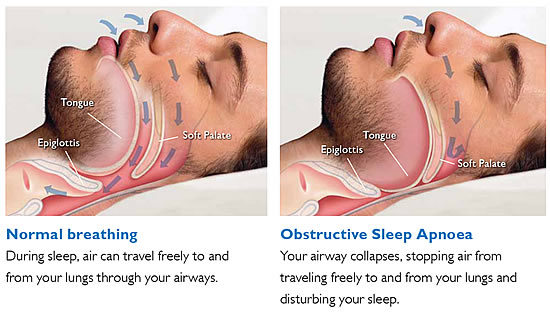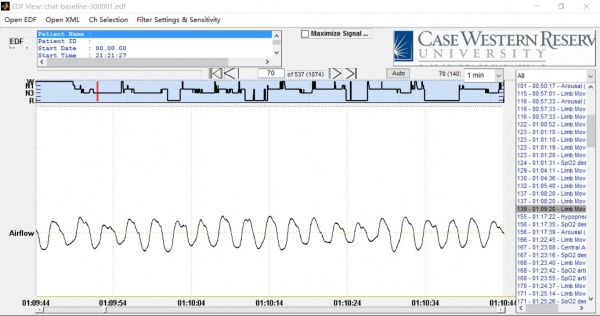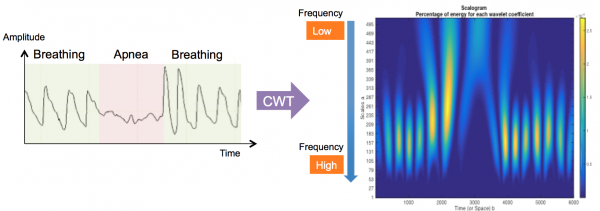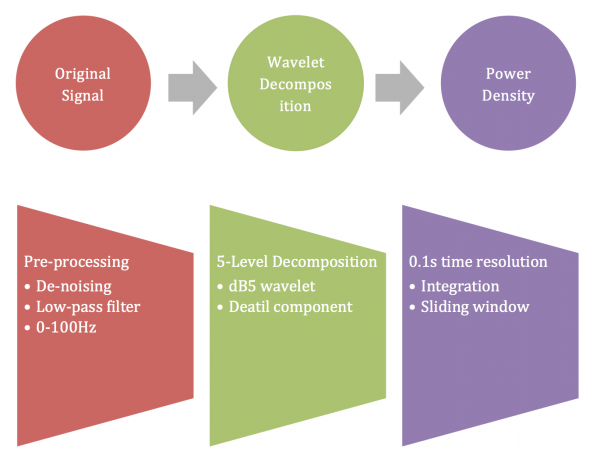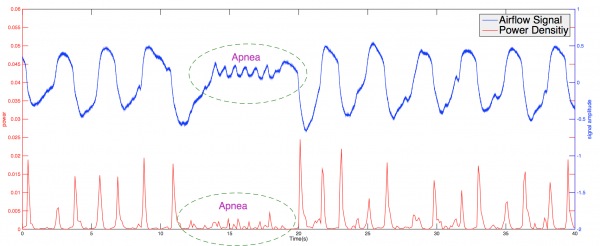Difference between revisions of "Projects:2015s1-58 Design And Development Of A New Respiratory Monitor For Detection Of Sleep Apnoea"
(→Data Acquisition) |
(→Result Analysis) |
||
| Line 87: | Line 87: | ||
== Result Analysis == | == Result Analysis == | ||
| + | After implementing massive tests on 100 different cases, the average detection accuracy of the method based on wavelet transform comes to around 85% and the sensitivity reaches up to 95%. | ||
| − | + | [[File:Result.png|600px]] | |
== Design Plan == | == Design Plan == | ||
Revision as of 10:27, 22 October 2015
Contents
Introduction
The ultimate aim of this project is to develop a respiratory monitor prototype for detection of sleep apnea. It is hoped that the prototype will eventually achieve the real-time monitoring of the patient’s sleep state and record the information of sleep apnea events.
In this academic year, the work on detection algorithm has been accomplished and a design plan to construct a physical monitor has been established for the future groups.
Supervisors
Dr. Said Al-Sarawi
Prof. Jagan Mazumdar
Dr. Cleto Mernone
Students
Jian Shi
Sandeep Singh
Background Information
Sleep apnea is a kind of sleep disorder that is characterized with suspension in breathing during sleep. Each interruption, called as an apnea interval, can last from ten seconds to several minutes.
Apneic events can be classified according to the nature of the underlying physiological cause. Central Sleep Apnea (CSA) is usually caused by the absence of correct signals from brain areas in charge of breathing to the relevant muscles and a normal breathing action cannot be implemented. Obstructive Sleep Apnea (OSA) is much likely to happen when the patient’s pharyngeal narrows or the upper airway collapses during sleep. The complex or mixed type of sleep apnea is a mix of CSA and OSA.
The latest research result illustrates that central sleep apnea is the most common type with a percentage 80%.
The below figure is an illustration of the cause mechanism of OSA.
Motivation
Regardless of type, an individual with sleep apnea suffers from difficulty of breathing during sleep, which leads to detrimental effects on sleep-quality and health. Some typical consequences of sleep apnea to the patient are as follows [7].
• High blood pressure
• Stroke
• Heart failure, heart attack or irregular heart beats
• Depression and lack of concentration in daytime
It is quite difficult to exactly specify how many Australians suffer from sleep apnea. It is generally thought that approximately 9% of women and 25% of men in Australia have clinically significant sleep apnea and 4% of men and women have symptomatic sleep apnea [5].
Due to the serious effects of sleep apnea and the enormous quantity of patients, the medical and health professions have been seeking for reliable sleep apnea detection and therapy approach in recent decades.
Fundamentally, the development of a sleep apnea monitor is extremely helpful to fill some gaps in the research of sleep apnea and make a contribution to the medical applications.
Data Acquisition
The data for use in detection tests are provided by A/Prof Baumert under the assistance of the project supervisor, Dr. Said Al-Sarawi. The project could not be a success without their helpful participation.
Those data files are stored in EDF and XML formats.
• EDF file – contains an multi-channel overnight recording of sleep signals and labels of each acquisition channel with some available information , such as sampling frequency. • XML file – contains the corresponding annotations of all the sleep events happening in the recording period and those annotations are used as reference while verifying if the detection statement is correct or not. The initial step to do analysis work is to observe the features of those provided signals.
A free EDF viewer (see Figure 3) from National Sleep Research Source is employed in this stage to combine the EDF files and XML files. The viewer enables the user to combine an EDF file with a corresponding sleep annotation file. The user has a myriad of ways to view the signals including scrolling, clicking on a specific annotation and determining the display channels of signal.
In this project, the channel of airflow signal is selected to implement the signal processing work.
Detection based on Wavelet
Figure 7 shows the frequency distribution variation from normal breathing session to apnea session.
Obviously, there is a significant power variation where the bright color denotes a higher power level and the darker color denotes a lower power level. A tendency of signal power from high frequency range to low frequency range has been discovered.
Based on the CWT analysis, the phenomenon of power variation in higher frequency band is considered to be utilized as the indicator to detect the occurrence of sleep apnea.
The next step is to extract the desired frequency components and calculate their power level so as to find out the power variation ratio.
The procedure of obtaining the power density of the airflow signal can be illustrated by the following chart.
The below figure demonstrates the power reduction in apnea intervals.
Result Analysis
After implementing massive tests on 100 different cases, the average detection accuracy of the method based on wavelet transform comes to around 85% and the sensitivity reaches up to 95%.
